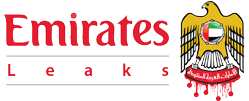A research study sheds light on the Saudi-Emirati competition over Hadhramaut Governorate in eastern Yemen, driven by the desire to exploit its vast resources. As the largest governorate in Yemen, Hadhramaut holds strategic significance, is rich in oil, and occupies a third of the country’s total area.
The study, issued by the Mokha Center for Studies, a Yemeni studies center, addressed the growing ambitions of the UAE to control and influence Yemen after long years of war on the country.
The Yemeni study proposed three potential options: the first is to maintain the current situation, preserving a fragile balance of power. The second option involves reaching a settlement between Riyadh and Abu Dhabi that secures their interests within the framework of a unified Yemeni state.
The study also addressed a third scenario: the sharp escalation of competition, potentially leading to confrontations between forces backed by both Saudi Arabia and the UAE. It noted that this rivalry is driven by both countries’ ambitions to expand their geopolitical influence in the region.
The study highlighted Hadhramaut’s significance to Saudi Arabia, largely due to its shared border and the strong tribal and economic ties between the region and key Hadhrami tribes within the Kingdom.
It noted that the UAE had limited connections to Hadhramaut before joining the Arab coalition in 2015. However, it saw the conflict as before opportunity to expand its political and military footprint in Yemen through a strategy of strategic deployment beyond its borders.
The study added that the UAE concentrated on controlling Yemen’s coasts, ports, and strategic islands in the south to boost its influence in the Indian Ocean and the Horn of Africa. To achieve this, it formed local forces like the “Hadhrami Elite Forces” to secure Mukalla and its surrounding areas, while also strengthening security services and providing resources to maintain control.
The study highlighted that, in contrast to the UAE, Saudi Arabia has implemented various policies and initiatives aimed at countering the rising Emirati influence in Hadhramaut and reinforcing the role of Yemen’s legitimate government along with loyal local factions.
It noted that Riyadh supported the establishment of the “Hadhramaut National Council” in June 2023, a political body representing the aspirations of the Hadrami community. Additionally, Saudi Arabia has been financing development projects in the governorate to promote stability and economic recovery.
The paper also reviewed the steps taken by both Saudi Arabia and the UAE, showcasing the escalating competition between them in Hadhramaut.
The study noted that while the UAE encouraged the “Southern Transitional Council” (STC) to oppose the creation of the “Hadhramaut National Council” and stage provocative events, Saudi Arabia backed the legitimate government and the “Homeland Shield” forces to solidify its military and security presence in the governorate.
It emphasized that the situation in Hadhramaut remains complex and sensitive, calling for de-escalation by all parties and efforts to reach agreements that safeguard everyone’s interests within the framework of a unified and stable Yemen.
The Washington Post previously reported that Hadhramaut Governorate, located in eastern Yemen, has effectively become an Emirati protectorate, due to the UAE’s substantial control over its policies and resources, contributing to the division of Yemen.



